
EN
Z05 | 2012 | 762.885
coolcept fl eX
coolcept³ fl eX
Installation and operating instructions

EN
2 762.885 Z05 2012 coolcept_fleX, coolcept³_fleX
Preface
Thank you for choosing inverters of the coolcept fleX and coolcept³ fleX product families by
KATEK Memmingen GmbH. Through the use of solar energy, you significantly help to
protect the environment by reducing the pollution of the atmosphere by the emissions of
carbon dioxide (CO2) and other harmful gases.
All rights reserved, including those for the translation. No part of this manual may be repro-
duced in any form without our written consent, nor processed by means of electronic sys-
tems.

EN
762.885 Z05 2012 coolcept_fleX, coolcept³_fleX 3
Table of contents
1 General information ................................................................... 5
1.1 Accessories .......................................................................................................... 5
1.2 Documents ........................................................................................................... 5
1.3 Liability, warranty .................................................................................................. 5
1.4 Contact ................................................................................................................. 5
1.5 Monitoring portal ................................................................................................... 5
1.6 EU Declaration of Conformity ............................................................................... 6
2 Abbreviations ............................................................................. 6
3 Safety .......................................................................................... 6
3.1 Designated use ..................................................................................................... 6
3.2 Target group ......................................................................................................... 7
3.3 General safety instructions ................................................................................... 7
3.4 Labels and symbols .............................................................................................. 8
3.4.1 Safety marks ......................................................................................................... 8
3.4.2 Keywords .............................................................................................................. 8
3.4.3 Signs, labels and safety marks on the device ....................................................... 9
4 Description ............................................................................... 10
4.1 Scope of delivery ................................................................................................ 10
4.2 Structure of the device ........................................................................................ 10
4.3 Exemplary connection ........................................................................................ 11
4.4 Connections, communication, and DC/AC .......................................................... 11
4.5 Connection cables .............................................................................................. 12
4.6 Display ................................................................................................................ 12
4.7 Cooling ............................................................................................................... 12
4.8 Grid monitoring ................................................................................................... 13
4.9 Data communication ........................................................................................... 13
4.9.1 "COM1" and "COM2" .......................................................................................... 13
4.9.2 Modbus RTU data connecting cable ................................................................... 14
4.9.3 Alternative RS485 data connecting cable ........................................................... 14
4.9.4 LAN ..................................................................................................................... 14
4.10 Connection peculiarities ...................................................................................... 15
4.11 Data display ........................................................................................................ 15
4.11.1 Data storage ....................................................................................................... 15
5 Installation ................................................................................ 16
5.1 Safety instructions for assembly and installation ................................................ 16
5.2 Mounting the inverter .......................................................................................... 17
5.3 Preparing AC connection .................................................................................... 18
5.3.1 Residual current circuit breaker (RCD) ............................................................... 18
5.3.2 AC cables ........................................................................................................... 18
5.3.3 Assembling the AC plug ..................................................................................... 19
5.3.3.1 Preparing cable (3-pin cable) .............................................................................. 20
5.3.3.2 Preparing cable (5-pin cable) .............................................................................. 20
5.3.3.3 Fitting cable to AC plug ....................................................................................... 21

EN
4 762.885 Z05 2012 coolcept_fleX, coolcept³_fleX
5.4 Preparing DC connection .................................................................................... 23
5.5 Connecting inverter and switching AC on ........................................................... 24
6 Dismounting the inverter ......................................................... 25
6.1 Switching AC and DC off .................................................................................... 25
6.2 Opening the AC plug .......................................................................................... 26
6.3 Removing inverter from mounting plate .............................................................. 26
7 Initial commissioning ............................................................... 27
7.1 Performing initial commissioning ........................................................................ 27
7.2 Finishing the initial commissioning...................................................................... 27
7.3 Setting the feed-in management ......................................................................... 28
7.3.1 Connecting energy meter ................................................................................... 28
7.3.2 Selecting an energy meter .................................................................................. 28
7.3.3 Limiting the dynamic feed-in value...................................................................... 28
7.4 Switching DC on ................................................................................................. 28
8 Operation .................................................................................. 28
8.1 Operating buttons ............................................................................................... 28
8.2 Functions of the operating buttons...................................................................... 29
8.3 Menu structure .................................................................................................... 30
8.4 Navigating the menu structure ............................................................................ 31
9 Faults ........................................................................................ 31
9.1 Event message type ........................................................................................... 32
10 Maintenance and care .............................................................. 32
11 Disposal .................................................................................... 32
12 Technical data .......................................................................... 33
12.1 StecaGrid 1511, 2011, 2511, 3011 and 3611 ..................................................... 33
12.2 StecaGrid 3011_2, 3611_2, 4611_2 and 5011_2 ............................................... 35
12.3 StecaGrid 3213, 4013, 5013 and 6013 ............................................................... 37

EN
762.885 Z05 2012 coolcept_fleX, coolcept³_fleX 5
1 General information
These instructions contain information for the safe use of the inverter and all the infor-
mation that a specialist needs for setting up, and the operator needs for operating the in-
verter.
The coolcept fleX and coolcept³ fleX inverters are available in various models for different
power classes. The StecaGrid #### inverters are suitable for the connection to one PV
generator. The StecaGrid ####_2 inverters are suitable for the connection to two PV gen-
erators.
The following models of the single-phase coolcept fleX inverters are available:
• StecaGrid 1511
• StecaGrid 3011_2
• StecaGrid 2011
• StecaGrid 3611_2
• StecaGrid 2511
• StecaGrid 4611_2
• StecaGrid 3011
• StecaGrid 5011_2
• StecaGrid 3611
The following models of the three-phase coolcept³ fleX inverters are available:
• StecaGrid 3213
• StecaGrid 5013
• StecaGrid 4013
• StecaGrid 6013
1.1 Accessories
Ask for possible accessories, options, suitable PV generators, and installation material at
the installer's or at KATEK.
1.2 Documents
Data sheets, drawings, country tables, and certificates are available in the download area
of the Steca homepage.
1.3 Liability, warranty
The conditions for the device are available for downloading on the Steca homepage:
https://www.steca.com/PV_on_Grid_warranty-conditions.
1.4 Contact
In the event of complaints or faults, please contact your local dealer, where you purchased
the product. He will assist you in all respects.
Contact in Europe:
KATEK Memmingen GmbH
Mammostra
sse 1
87700 Memmingen
Germ
any
Web
: www.steca.com
customerservice@stecasolar.com
1.5 Monitoring portal
Steca's monitoring portal sunCloud offers online monitoring of the PV system at no charge:
https://steca.powerdoo.com

EN
6 762.885 Z05 2012 coolcept_fleX, coolcept³_fleX
1.6 EU Declaration of Conformity
The products described in this document comply with the applicable European directives.
The certificate is available in the download area of our homepage.
2 Abbreviations
Abbreviation
Description
AC Alternating Current
DC Direct Current
LAN
L
ocal
A
rea
N
etwork
MPP
M
aximum
P
ower
P
oint
MPP tracker Regulates the power of the connected module strings to the MPP
PV
P
hoto
v
oltaics (technology for the conversion of solar energy into
electrical energy)
RTU
R
emote
T
erminal
U
nit
SELV Safety Extra Low Voltage
TCP/IP Transmission Control Protocol/Internet Protocol
3 Safety
3.1 Designated use
The coolcept fleX inverters are intended for single-phase and the coolcept³ fleX inverters
for three-phase feed-in and are suitable for indoor and outdoor installation on a wall.
Only use the inverter:
• for grid-connected PV generators.
• for PV generators whose connections are not grounded.
• for solar modules with Class A rating in accordance with IEC 61730 because the in-
verter does not have any galvanic isolation.
• when the maximum permissible system voltage of the PV generator is higher than the
AC grid voltage.
NOTE
Only for Australia: the inverter may only be operated as a single device. It is
not permitted to interconnect several devices.
NOTE
Only for Italy: information about the particularities for the use in Italy have
been added as an appendix to the Italian version of these instructions.

EN
762.885 Z05 2012 coolcept_fleX, coolcept³_fleX 7
3.2 Target group
Unless otherwise noted, the target group for these instructions are specialists and opera-
tors. The following persons are considered specialists:
• Persons that have knowledge of the established terms and skills for setting up and oper-
ating PV generators.
• Persons that due to their knowledge and experience are able to evaluate the following
tasks and recognise possible hazards:
- Mounting electrical equipment
- Assembling and connecting data cables
- Assembling and connecting power supply cables
3.3 General safety instructions
• This document must be kept to hand at the site of use of the inverter.
In case of a change of ownership pass on the document with the inverter.
• This document must have been read and understood in full before installing and using
the inverter.
• Do not commission the inverter before a shut-down control or overcurrent protective de-
vice has been installed.
• Incorrectly connected components may cause damage to the inverter.
• If one of the following components is damaged, immediately take the inverter out of op-
eration and disconnect it from the grid and the PV generators:
- Inverter (not functioning, visible damage, smoke, penetration of liquid etc.)
- Cables
- PV generators
• Do not switch on the system again until it has been repaired and checked by a suitably
qualified and authorised technical specialist.
• Dangerous voltages may be present for up to 10 minutes after disconnecting the in-
verter from the voltage sources.
• Disconnect inverter from both voltage sources (power grid and PV generator) prior to
any work on the inverter.
• Always carry out the measures described in this document in the specified sequence.
• Do not change nor remove any factory-applied labels on the inverter.
• Do not open the inverter. Danger to life! Opening the inverter will also void any warranty.
• Do not cover the inverter.
• Keep children away from the inverter.
• Follow the instructions of manufacturers of the connected components.
• Follow the general and national safety and accident prevention regulations.
Due to its design, the inverter cannot generate a DC residual current.

EN
8 762.885 Z05 2012 coolcept_fleX, coolcept³_fleX
3.4 Labels and symbols
3.4.1 Safety marks
The following safety marks are used on the inverter and in these instructions:
Warning sign
Nature of the danger
Warning of hazardous voltage
Warning of hazardous area
Warning of hot surface
Disposal information (separate collection of electrical and electronic
equipment)
3.4.2 Keywords
The following keywords are used in these instructions:
Keyword
Meaning
DANGER Indicates a hazardous situation which, if not avoided, leads to death or
serious injuries.
WARNING Indicates a potentially hazardous situation which, if not avoided, may
lead to death or serious injuries.
NOTE Indicates a potentially hazardous situation which, if not avoided, may
lead to damage to property and/or the environment.

EN
762.885 Z05 2012 coolcept_fleX, coolcept³_fleX 9
3.4.3 Signs, labels and safety marks on the device
Manufacturer address
"Protection Class II" symbol
Technical data of the AC output
Standard for grid monitoring
Country-specific characteristic
Barcode (for internal purposes)
Device topology
Degree of protection
Technical data of the DC input
Item number and product name
Disposal information (separate collection of electrical and electronic equipment)
Request to disconnect the power sources prior to any intervention
Note on presence of voltage after switching off the inverter
Serial number (barcode and plain text)
Warning of voltage (two voltage sources)
Warning of hot surface
Follow the instructions
Only for Australia: cover the "Protection Class II" symbol (2) on the type
plate.

EN
10 762.885 Z05 2012 coolcept_fleX, coolcept³_fleX
4 Description
4.1 Scope of delivery
Inverter
Mounting plate
AC plug (coolcept fleX: 3-pin, coolcept³ fleX: 5-pin)
DC plug (one pair*)
Sealing cap (3 units)
Installation and operating instructions
* coolcept fleX 3011_2, 3611_2, 4611_2 and 5011_2: two pairs
4.2 Structure of the device
Case
Display (monochrome, 128 x 64 pixels)
Operating buttons (for function refer to chapter 8)
Connections

EN
762.885 Z05 2012 coolcept_fleX, coolcept³_fleX 11
4.3 Exemplary connection
Connection of evaluation system
Data logger / other inverters
Connection of energy meter at the mains connection
Mains connection
PV generator (2 ea. in the case of StecaGrid 3011_2,
3611_2, 4611_2, 5011_2)
4.4 Connections, communication, and DC/AC
LAN (RJ45 socket)
COM1 (RJ45 socket)
COM2 (RJ45 socket)
AC connection
DC connection, '-' terminal* (DC input, MPP
tracker 2)
DC connection, '+' terminal* (DC input, MPP
tracker 2)
DC connection, '-' terminal (DC input, MPP
tracker 1)
DC connection, '+' terminal (DC input, MPP
tracker 1)
DC disconnector (interrupts the plus and minus
inputs simultaneously)
* only in case of StecaGrid 3011_2, 3611_2, 4611_2 and 5011_2

EN
12 762.885 Z05 2012 coolcept_fleX, coolcept³_fleX
4.5 Connection cables
Pin assignment of alternative RS485 data connecting cable.
Device
Inverter
Solar-Log
WEB'log1)
Kiwigrid
Signal
Connection
COM1/COM2
Terminal block
RJ12
Terminal
block
Contact
1 1 2 A Data A
2 4 4 B Data B
3 - - - -
4 - - - -
5 - - - -
6 - - - -
7 - - - -
8 3 6 GND Ground
NOTE
1) Contact 1 of the RJ12 socket supplies 24 V DC!
The RS485 input of the inverter may be damaged.
► Never connect the alternative data connecting cable to contact 1.
4.6 Display
The display shows the menus of the inverter.
The backlight of the display is switched on by pressing any button. The operating states of
the inverter are shown as follows:
Display
Meaning
The inverter is processing large data volumes.
It is not possible to enter user data
Backlight flashing red
with event message
Fault
4.7 Cooling
The inverter may heat up during operation. This is a normal operating characteristic. A fan
disperses the waste heat inside the closed case evenly onto the case surface. Cooling fins
allow the heat to dissipate to the surrounding.

EN
762.885 Z05 2012 coolcept_fleX, coolcept³_fleX 13
4.8 Grid monitoring
The grid monitoring in the device permanently monitors the grid parameters of the public
grid. If the grid monitoring detects a deviation of the grid parameters from the statutory re-
quirements, the device switches off automatically. When the public grid meets the statutory
requirements again, the device switches on again automatically.
4.9 Data communication
• "LAN" connection (1) (Ethernet for TCP/IP network) for the communication with a central
data server.
• "COM1" connection (2) (RS485 bus) for the communication with external devices, e.g.
with a data logger.
• "COM2" connection (3) (Modbus RTU) for the communication with e.g. an external en-
ergy meter.
4.9.1 "COM1" and "COM2"
The inverter can communicate with other device via the "COM1" and "COM2" connections.
Requirements for the communication:
• Both ends of the data connection are terminated.
• RJ45 standard cables or alternative data connecting cables are used as bus cables.
For further information on connecting further master devices and further inverters refer to
the document "Technical Information" in the download area on the Steca website.
"COM2"
The inverter is able to communicate with energy meters (Modbus RTU) via the "COM2"
connection. To do this, the energy meter must meet the following requirements:
• The energy meter has been programmed in the inverter.
• The energy meter measures the draw from the grid in positive direction (refer to instruc-
tions of the energy meter).

EN
14 762.885 Z05 2012 coolcept_fleX, coolcept³_fleX
4.9.2 Modbus RTU data connecting cable
NOTE
Voltage may cause property damage.
► Only have specialists manufacture the alternative data connecting cable.
► Only use suitable outdoor patch cables for outdoor installations.
Use a RJ45 standard cable or a CAT5 patch cable as data connecting cable. For further
information on the plug connection of the Modbus RTU data cable refer to the document
"Technical Information" in the download area on the Steca website.
4.9.3 Alternative RS485 data connecting cable
Use a CAT 5 cable for the alternative data connecting cable in the case of long data con-
necting distances.
For further information on the data connecting cable, the RS485 termination and the pin
assignment of the alternative RS485 data connecting cable refer to the document "Tech-
nical Information" in the download area on the Steca website.
4.9.4 LAN
Automatic start of the transmission of unencrypted data.
After establishing the network connection, the inverter automatically starts
data transmission to the server. If automatic transmission is not wanted:
► Remove network cable.
Or:
► Deactivate data transmission in "Settings" > "Network".
Via the "LAN" connection, the inverter can send yield data and event messages to the
server of a web portal. The web portal allows the graphical representation of the yield data.
With the monitoring portal sunCloud, permanently free of charge, online monitoring of PV
generators is easy and comfortable.
►
In the menu "Settings" > "Network", the operator can enter network param-
eters in further submenu masks; refer to the document "Technical Infor-
mation" in the download area on the Steca website.

EN
762.885 Z05 2012 coolcept_fleX, coolcept³_fleX 15
4.10 Connection peculiarities
When "Italy" has been set in the country selection, the "COM1" or "COM2" connection
must be wired in accordance with the CEI 0-21 standard. For a detailed description refer to
the appendix (only in the Italian version of these instructions) or the document "Technical
Information" in the download area on the Steca website.
4.11 Data display
The following data are shown on the display:
• voltage and current generated by the PV generator
• power and current fed into the public grid
• current voltage and frequency of the public grid
• generated energy yields on a daily, monthly and annual basis
• current error states and notes
• information on the version of the device
4.11.1 Data storage
In the internal memory (EEPROM), event messages and energy yields are stored with the
date. The energy yields are stored for the specified period.
Energy yield
Storage resolution/period
10-minutes values 31 days
Daily values 13 months
Monthly values 30 years
Annual values 30 years
Total yield Permanent

EN
16 762.885 Z05 2012 coolcept_fleX, coolcept³_fleX
5 Installation
5.1 Safety instructions for assembly and installation
DANGER
Voltage
Under solar radiation, the PV generators and cables may be energised.
There is the risk of death due electrocution and electric discharge.
► Disconnect the DC and AC connections from the power source prior to
any work on the inverter:
– Switch off all AC line circuit breakers and secure them against being
switched on again.
– Set the DC disconnector on the inverter to position '0' and secure it
against being switched on again.
– Disconnect the plug connectors of the DC cables (follow the instruc-
tions of the manufacturer).
– Disconnect AC plug from the inverter: press locking hook on the AC
plug slightly an remove AC plug.
► Only have specialists carry out any installation work.
► Only connect the cables to the inverter when it is requested by the instruc-
tions.
► Only connect SELV circuits to the RJ45 socket.
► Maintain access to the shut-down control free at all times.
► Only have trained qualified personnel carry out the installation and com-
missioning.
NOTE
Improper installation my cause performance reduction or damages on the in-
verter.
► Ensure that the installation site meets the following requirements:
– The mounting surface and immediate surrounding must be: perma-
nently fixed, vertical, level, of low flammability, and not subject to con-
stant vibration.
– The ambient conditions are within the permissible range (refer to Tech-
nical data).
– Open spaces are provided for around the device (above and under-
neath ≥ 200 mm, to the sides and in front ≥ 60 mm).
► Do not install the device in stables where animals are kept.
► Avoid exposure to direct sunlight of the device.
► Ensure that the display can be easily read on the installed device.

EN
762.885 Z05 2012 coolcept_fleX, coolcept³_fleX 17
Data transmitted via a public network are not protected from being accessed
by third parties.
Data transmission via a public network may cause additional costs.
► Obtain information on costs possibly involved prior to the use of a public
network.
► Use a public network at your own risk.
• Lay the cables such that the connection cannot come loose accidentally.
• Ensure that the fire safety measures of the building are not impaired when routing ca-
bles for the device.
• Make sure that no inflammable gases are present.
• Observe all applicable installation regulations and standards, national laws and connec-
tion values specified by the regional power supply company.
• Observe the connection ratings specified on the type plate.
• Do not connect the DC cables to ground potential.
The DC inputs and the AC output are nor galvanically isolated from each other.
5.2 Mounting the inverter
1. Fasten the mounting plate (4) to the mounting surface with 4 screws (3). The locking
plate (1) points upwards.
2. Place inverter on the mounting plate.
3. Hook the 4 locating pins on the back of the inverter into the retaining tabs (2) of the
mounting plate.
4. Press inverter against the mounting plate. The detent on the back of the inverter en-
gages audibly in the locking plate (1).

EN
18 762.885 Z05 2012 coolcept_fleX, coolcept³_fleX
5.3 Preparing AC connection
DANGER
Voltage
There is a risk of death by electrocution.
► Follow the safety instructions and warning notices in chapter 5.1.
► Never disconnect nor connect the plug connection while the AC connec-
tion is live.
► Install the circuit breaker prior to any work on the AC connection.
5.3.1 Residual current circuit breaker (RCD)
Due to its design, the inverter cannot cause a DC fault current. Therefore, the installation of
a Residual Current Device (RCD) is not necessary. If local installation regulations or the
power supply company require the installation of an external residual current device (RCD)
in the AC connection line, a type A residual current device (RCD) is sufficient according to
IEC 62109-1. The tripping current should be rated at least 100 mA or higher.
If several inverters are installed in a system, a corresponding earth-leakage circuit breaker
(RCD) must be installed for each individual inverter.
5.3.2 AC cables
Suitable cables
• UL AWM Style 21098, size No. AWG 14
• UL AWM Style 2464, size No. AWG 16-22
Inverter, 1 phase
Cable cross section
AC cable
Power loss
(with 10 m cable length)
Circuit breaker
StecaGrid 1511 1.5 mm² 10 W
B16 2.5 mm² 6 W
4.0 mm² 4 W
StecaGrid 2011 1.5 mm² 18 W
B16 2.5 mm² 11 W
4.0 mm² 6 W
StecaGrid 2511 2.5 mm² 16 W B16
4.0 mm² 11 W
StecaGrid 3011
StecaGrid 3011_2
2.5 mm² 25 W B16 or B25
4.0 mm² 15 W
StecaGrid 3611
StecaGrid 3611_2
2.5 mm² 35 W B25
4.0 mm² 23 W

EN
762.885 Z05 2012 coolcept_fleX, coolcept³_fleX 19
Inverter, 1 phase
Cable cross section
AC cable
Power loss
(with 10 m cable length)
Circuit breaker
StecaGrid 4611_2 2.5 mm² 56 W B25
4.0 mm² 35 W
StecaGrid 5011_2 2.5 mm² 64 W B25
4.0 mm² 40 W
Inverter, 3-phase
Cable cross section
AC cable
Power loss
(with 10 m cable length)
Circuit breaker
StecaGrid 3213 2.5 mm² 4 W B16
4.0 mm² 3 W
StecaGrid 4013 2.5 mm² 7 W B16
4.0 mm² 4 W
StecaGrid 5013
2.5 mm²
11 W
B16
4.0 mm² 7 W
StecaGrid 6013 2.5 mm² 14 W B16
4.0 mm² 8 W
5.3.3 Assembling the AC plug
NOTE
If the instructions of the plug manufacturer are not followed when connecting
the AC plug, the cable and the device may be damaged.
► Protect plug from bending loads.
► Do not use plug connector for interruption of current.

EN
20 762.885 Z05 2012 coolcept_fleX, coolcept³_fleX
5.3.3.1 Preparing cable (3-pin cable)
Single connection
Double connection
Ø 6…14 Ø 13…18 Ø 6…14
PE N, L PE N, L PE N, L
y 30 25 42 37 45 40
x 8
5.3.3.2 Preparing cable (5-pin cable)
Single connection
Double connection
Ø 6…10 / 10…14
Ø 13…18
Ø 6…10 / 10…14
PE N, L PE N, L PE N, L
Screw-type connection
y 30 25 55 50 45 40
x 8
Crimp connection
y 42 37 49 44
x 7.0 + 1
Page is loading ...
Page is loading ...
Page is loading ...
Page is loading ...
Page is loading ...
Page is loading ...
Page is loading ...
Page is loading ...
Page is loading ...
Page is loading ...
Page is loading ...
Page is loading ...
Page is loading ...
Page is loading ...
Page is loading ...
Page is loading ...
Page is loading ...
Page is loading ...
Page is loading ...
Page is loading ...
-
 1
1
-
 2
2
-
 3
3
-
 4
4
-
 5
5
-
 6
6
-
 7
7
-
 8
8
-
 9
9
-
 10
10
-
 11
11
-
 12
12
-
 13
13
-
 14
14
-
 15
15
-
 16
16
-
 17
17
-
 18
18
-
 19
19
-
 20
20
-
 21
21
-
 22
22
-
 23
23
-
 24
24
-
 25
25
-
 26
26
-
 27
27
-
 28
28
-
 29
29
-
 30
30
-
 31
31
-
 32
32
-
 33
33
-
 34
34
-
 35
35
-
 36
36
-
 37
37
-
 38
38
-
 39
39
-
 40
40
STECA coolcept fleX User manual
- Type
- User manual
- This manual is also suitable for
Ask a question and I''ll find the answer in the document
Finding information in a document is now easier with AI
Related papers
-
STECA StecaGrid 2000+ User manual
-
STECA coolcept-x User manual
-
STECA coolcept³ fleX User manual
-
STECA coolcept³-x User manual
-
STECA coolcept³-x User manual
-
STECA coolcept³-x User manual
-
STECA SUNCLOUD User manual
-
STECA StecaGrid 8 000+ 3ph Installation And Operating Instructions Manual
-
STECA StecaGrid 2010+ Master Installation And Operating Instructions Manual
-
STECA StecaGrid 1900 Owner's manual
Other documents
-
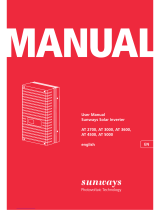 Sunways AT 3000 User manual
Sunways AT 3000 User manual
-
Energizer Force User manual
-
Technaxx TX-250 Owner's manual
-
SolaX Power X1 Series User manual
-
Western W-HPK 1-3K Owner's manual
-
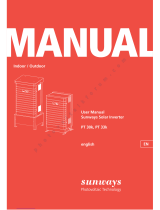 Sunways PT 30k User manual
Sunways PT 30k User manual
-
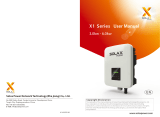 Solax X1 Boost Solar Power Inverter User manual
Solax X1 Boost Solar Power Inverter User manual
-
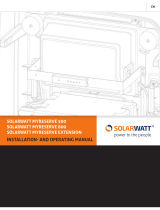 solarwatt MyReserve Extension 2.2 Installation guide
solarwatt MyReserve Extension 2.2 Installation guide
-
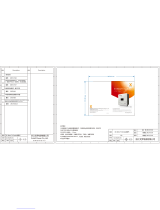 SolaX Power X1-Fit-5.0E User manual
SolaX Power X1-Fit-5.0E User manual
-
Pepperl+Fuchs VLX-F231-B25 Owner's manual












































